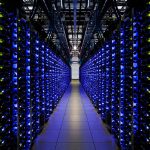
- AI Infrastructure
- Data Centers
- Energy & Climate
AI Data Centers Strain U.S. Power Grid and Climate Goals
5 minute read

Data center energy demand surges as artificial intelligence applications strain U.S. power grids and challenge climate goals
Key Takeaways
- AI data centers could consume 12-15% of U.S. electricity by 2030, up from the current 4%, as artificial intelligence workloads drive unprecedented energy demand across the technology sector.
- China commits to carbon neutrality by 2060 while continuing heavy investments in both coal and renewable energy, highlighting the complex balancing act between economic growth and climate obligations.
- Global data centers may account for 21% of total energy demand by 2030 when AI workloads are factored in, creating new challenges for national climate targets and renewable energy infrastructure.
Introduction
The collision between artificial intelligence expansion and global climate commitments creates an unprecedented energy challenge for governments and corporations worldwide. As nations pursue ambitious carbon reduction targets under the Paris Agreement, the rapidly growing energy demands of AI infrastructure threaten to undermine sustainability goals.
Major economies face a fundamental tension between technological advancement and environmental stewardship. While countries implement policies to transition toward renewable energy sources, the AI revolution demands massive computational power that could overwhelm existing clean energy capacity.
Key Developments
China leads global carbon emissions while pursuing dual energy strategies. The world’s largest emitter targets peak carbon emissions by 2030 and carbon neutrality by 2060, yet continues substantial investments in both coal-fired power plants and renewable energy infrastructure.
The United States has rejoined the Paris Agreement with commitments to reduce emissions by 50-52% from 2005 levels by 2030. This ambitious target coincides with explosive growth in domestic AI development and data center construction across major technology hubs.
Europe positions itself as a climate policy leader through its Green Deal initiative, targeting a 55% emissions reduction from 1990 levels by 2030. The continent aims to achieve climate neutrality by 2050 while accommodating increasing AI workloads from both domestic companies and international technology firms establishing European operations.

Market Impact
Energy-intensive AI operations currently consume approximately 4% of U.S. electricity generation. Industry projections indicate this figure could triple to 12-15% by 2030 as machine learning applications proliferate across sectors.
Global energy markets face mounting pressure from data center expansion. Worldwide data centers may account for up to 21% of total energy demand by 2030 when AI computational requirements are included, according to Financial Times analysis.
Renewable energy investments show significant increases as companies seek to offset AI-related carbon footprints. Solar and wind sectors experience accelerated growth driven by corporate sustainability mandates and regulatory compliance requirements.
Strategic Insights
Technology companies adopt targeted AI deployment strategies to maximize returns while containing energy costs. This approach treats artificial intelligence as a value-driven investment rather than pursuing broad-scale implementation across all business functions.
Hardware innovation focuses on energy-efficient solutions including specialized AI chips and optimized cooling systems. Major firms invest in workload distribution technologies that shift computational tasks to regions with abundant renewable energy supplies.
The Jevons paradox emerges as a critical consideration for energy planners. While AI-driven efficiencies reduce individual task energy consumption, rising overall demand may outpace these efficiency gains, resulting in net energy increases.
Expert Opinions and Data
Emerging economies confront unique challenges balancing development needs with environmental obligations. India commits to reducing emissions intensity by 33-35% by 2030 from 2005 levels while maintaining heavy reliance on coal-powered electricity generation.
Energy sector analysts develop new assessment frameworks including energy-per-AI-task metrics to better quantify computational environmental impact. These measurements help corporations report carbon footprints more accurately to regulatory authorities and stakeholders.
AI applications increasingly support renewable energy integration through enhanced grid management and predictive maintenance systems. These technologies accelerate decarbonization efforts while simultaneously creating additional energy demands for their operation.
Conclusion
The intersection of AI advancement and climate policy creates both opportunities and constraints for global energy systems. Countries must navigate complex tradeoffs between technological competitiveness and environmental commitments as data center energy demands accelerate.
AI’s power appetite is now a core strategy variable—not a footnote. To scale responsibly, companies must pair value-driven AI deployment with long-tenor clean-firm PPAs, targeted efficiency gains, and grid-aware siting. Policymakers, meanwhile, need credible transmission plans and stable rules to align climate goals with digital growth. The winners will be those that turn energy constraints into design constraints—building AI that’s fast, useful, and power-smart.
Corporate sustainability reporting requirements intensify pressure on technology firms to source renewable energy and implement efficient AI systems. The dual role of artificial intelligence as both an energy consumer and optimization tool defines the current landscape for climate-conscious business strategy.








